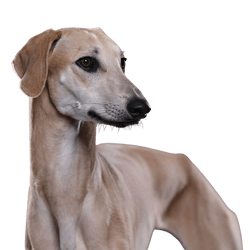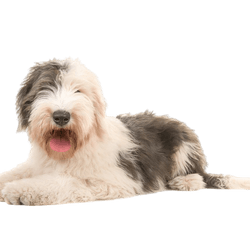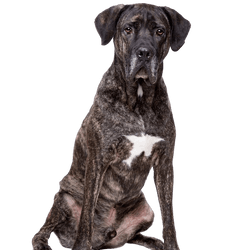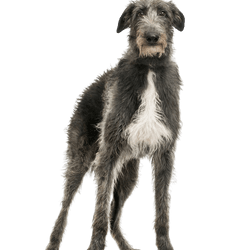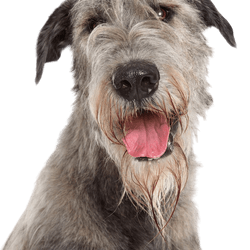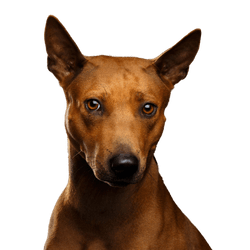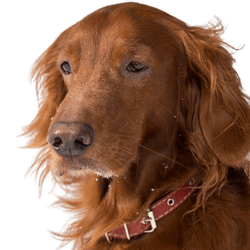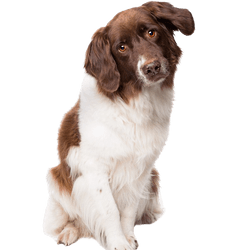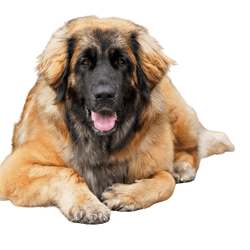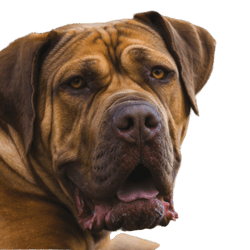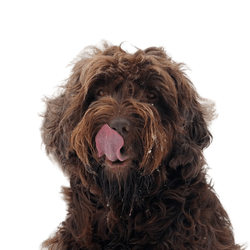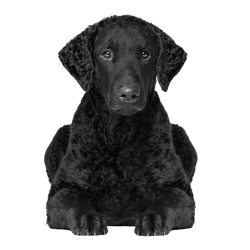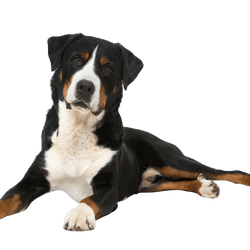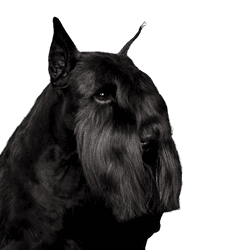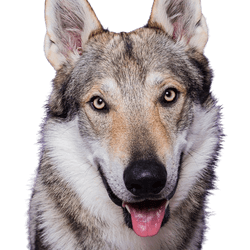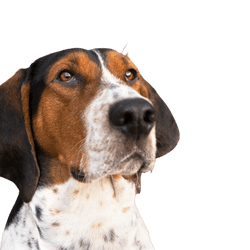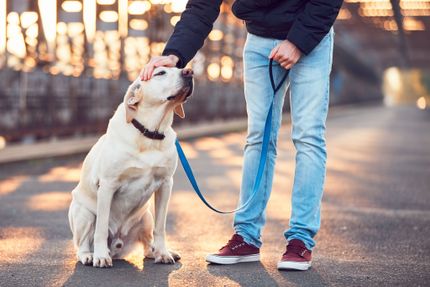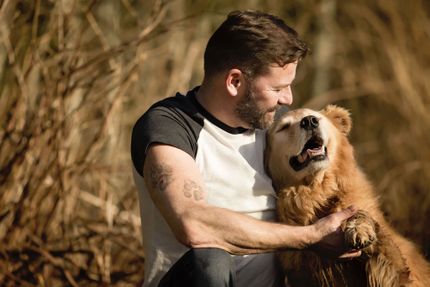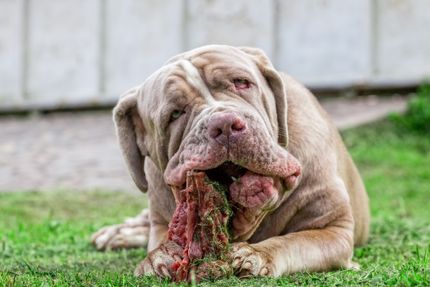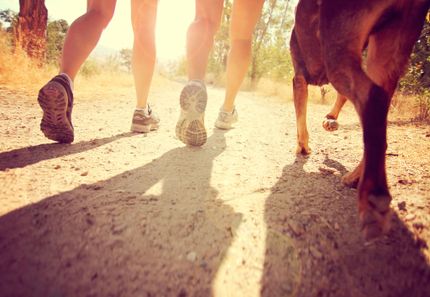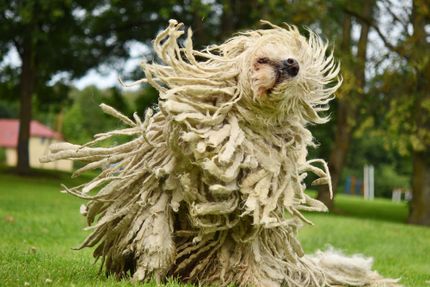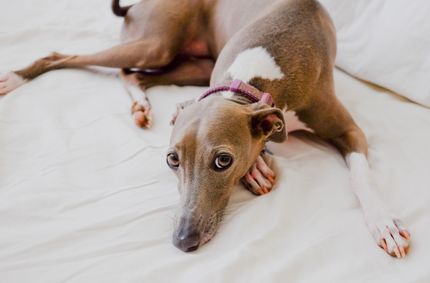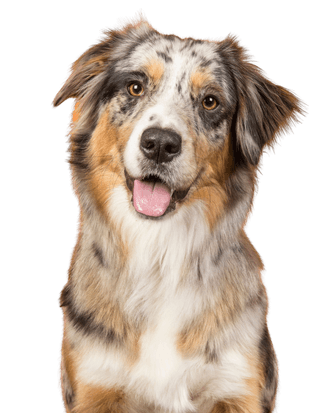
Australian Shepherd Breed description: Character & Co
Australian Shepherd
Facts & Origin
What is the origin of the Australian Shepherd?
Contrary to what the name might suggest, the Australian Shepherd does not originate in the Down Under, but in the United States: Their ancestors probably traveled from Europe to the United States with settlers. They followed the call of the gold rush around the year 1840. It is believed that emigrants from the Basque Country initially reached Australia with Merino sheep typical for their home country. The export of Spanish animals was prohibited with the consequence of the death penalty until the 18th century. When restrictions were eased, shepherds moved to the New World and Australia. In the USA, this breed of sheep was simply called "Australian Sheep" and its keepers were given the logical name "Australian Shepherd". To this date, it is still not entirely clear which breeds of dog were included. Cynologists suspect that the old German winner, the Cumberland Sheepdog and the Scottish Shepherd were crossed. In the USA, the breed soon gained great popularity among shepherds and in competitions. At shows they demonstrated their skills in operating and herding. Although a uniform standard was defined in 1957, the Australian Shepherd was not recognized by the FCI International Dog Association until 1996.
What are the breed characteristics of the Australian Shepherd?
Australian Shepherds are characterised by a light but muscular build. They move smoothly and skillfully. Also typical for them are the high triangular ears, which the animal tilts to the side or to the front when alert. Some animals are born with a congenital butt rod, also known as a natural bobtail. If you want to buy an Australian Shepherd, you should know about the existing two lines of breeds. The working line has retained its excellent herding skills and is known for their temperamental spirit. If you are looking for a loyal family companion though, it is better to choose the quieter show line. These dogs also need a lot of work, but they are less energetic.
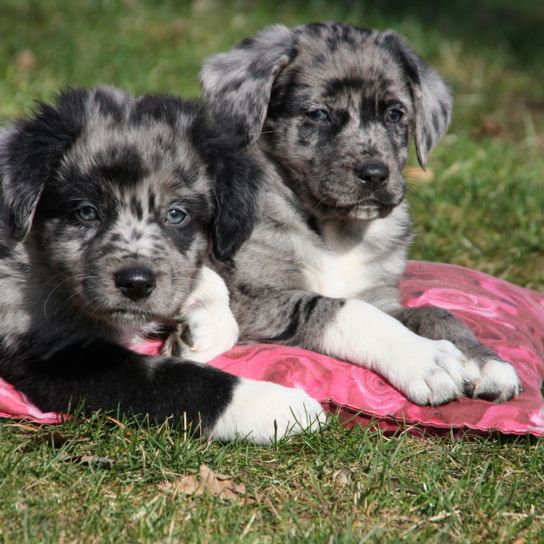
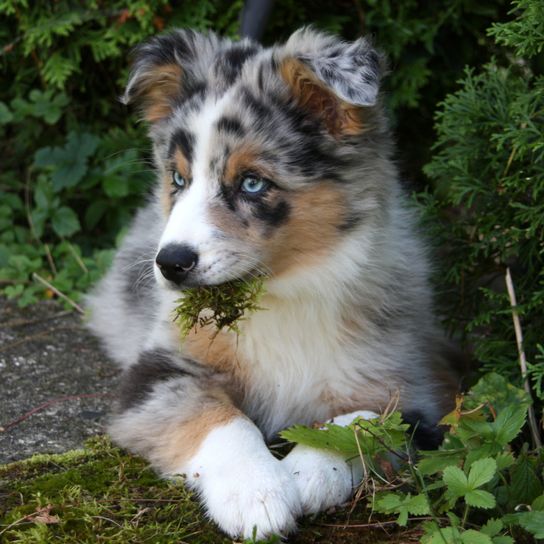
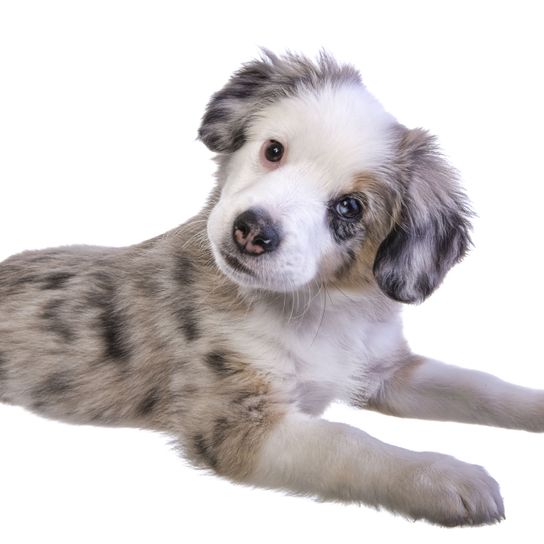
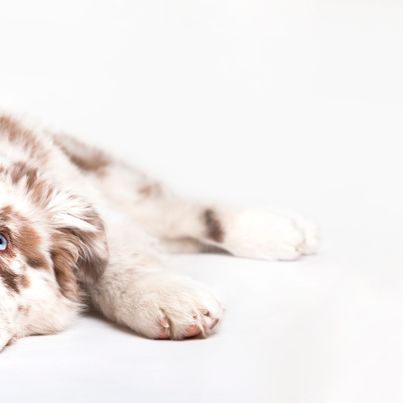
| Alternate Name | Aussie, Standard, Miniature or Toy Australian Shepherd, Australian Shepherd Dog |
| Origin | USA |
| Life expectancy | 10 - 15 years |
| Care requirements | high-maintenance |
| Activity level | high |
| FCI group | Sheepdogs |
| AKC group | Herding Group |
| KC group | Pastoral Group |
Australian Shepherd mixes
Attitude, character and temperament of the breed
What are the typical characteristics of the Australian Shepherd?
With this breed you must not forget that they are real workhorses. They were used to running numerous kilometers every day when managing large herds. They are not suitable for coach potatoes who prefer to spend their evenings in front of the TV. Pure endurance training such as simply accompanying their owners while cycling or jogging are not sufficient for this intelligent animal. They need to be stimulated mentally too. These animals are in their element when doing dog sports, but they are also suitable as rescue or therapy dogs. Nevertheless it is also important to allow your four-legged friend to rest. These spirited animals have to learn how to do that from an early age. Otherwise you end up with an Australian Shepherd that demands your attention all day long. Not being challenged enough is counterproductive for these four-legged friends: They develop creative ideas and bad habits that their owners usually won't like.
Character
Usage
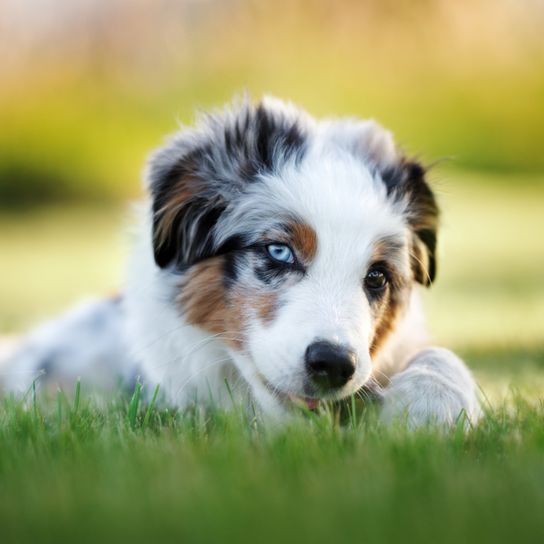
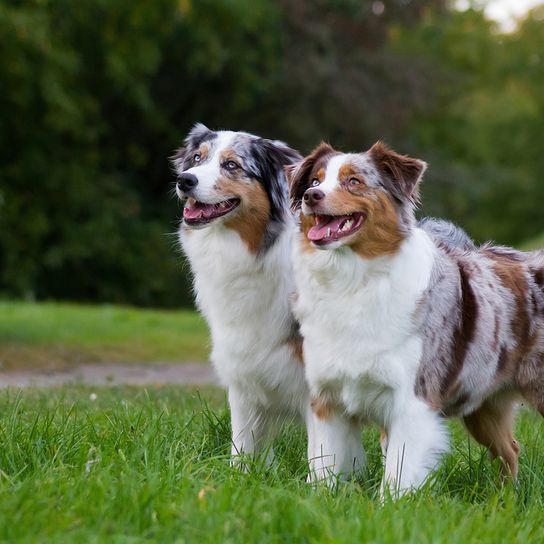
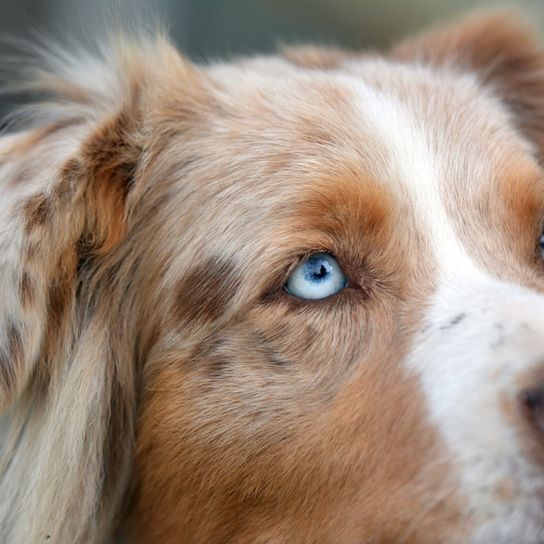

Health and breeding information
What Are Typical Diseases in an Australian Shepherd?
- Hip dysplasia
- Elbow dysplasia
- Progressive retinal atrophy (retinal eye disease)
- MDR1 defect
- With Merle types blindness or deafness
Just like Collies, Australian Shepherds increasingly experience multi-drug resistance gene defects (MDR1 genes). This can cause hypersensitivity to certain medications.
What to consider when breeding Australian Shepherds?
The Merle factor plays a crucial role in the Australian Shepherd breeding. Merle means a lightened coat in certain areas that looks like torn spots. But not only the coat is affected, the pigmentation is also different in their eyes. Especially when both parents have a merle factor, health problems can arise. Around a quarter of these animals are deaf in at least one ear. An Australian Shepherd puppy from reputable breeding is sold with papers. You will find out who their ancestors are and you will receive proof of all examinations and vaccinations.


Appearance and fur of the Australian Shepherd
Four basic colours dominate the appearance of this breed: red, blue-merle (gray basic colour and marbled black), red-merle (light red or beige basic colour and marbled red or brown) or black. Since four badge variants are permitted, a total of 16 colour variations exist. It is typical that all colours except white are predominant around the eyes. Different colours are also allowed for their almond-shaped eyes: You will find animals with blue, brown or amber-coloured eyes. The fur is of meidium length. Only close to the head, forelegs and the outside of the ears it is shorter. The ruff is more bushy in males than in females.
How big is the Australian Shepherd?
- Males: 51 to 58 cm
- Bitches: 46 to 53 cm
How much does an Aussie weigh
An Australian Shepherd reaches a maximum weight of 22 kg.
What is the average age of an Australian Shepherd?
Australian Shepherds reach an average age of 11 to 15 years.
| Fur length | long |
| Fur | flat coated |
| Ear shape | Standing Ears |
| Tail | fanned out |
| Anatomy | sporty |
| Size ♀ | 46 - 54 cm |
| Weight ♀ | 28 - 32 kg |
| Size ♂ | 51 - 58 cm |
| Weight ♂ | 28 - 32 kg |
| Suitable For | - |
Colors
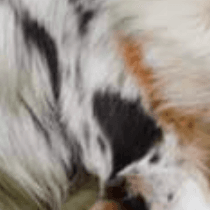
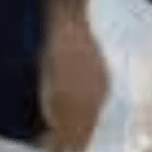



Known Diseases
Elbow dysplasia (ED)
Elbow joint dysplasia is a chronic disease complex of the elbow joint of fast growing dog breeds.
Hip dysplasia (HD)
The hip dysplasia or hip joint dysplasia of the dog (HD) is a maldevelopment of the hip joint.
MDR1 defect
The MDR1 defect is a defect in the MDR1 gene that can occur in some breeds of dogs and in humans. This results in the deficient or absent synthesis of a certain protein which is an important component of the blood-brain barrier, leading to hypersensitivity to some drugs.
Progressive Retinal Atrophy (PRA)
Progressive retinal atrophy (PRA) is a slowly progressive death of the retina in dogs.
Numbness
Often occurs in old age.
FAQ
-
Yes, with enough exercise an Australian Shepherd makes a good family dog. In general, however, he is a herding dog and sheepdog and must therefore be very well exercised physically and mentally and is a real chatterbox who really needs a lot of activity to serve as a family dog.
-
A serious breeding requires for an Australian Shepherd 2000Euro or more. The asked colour Merle can also cost 2500 Euro. In addition, there are many crossbreeds with Australian Shepherd, which are also very popular, because you want to breed the coloring of the Aussie.
-
Of course, it is a matter of education how long you can leave the Australian Shepherd alone. Regardless of the training, you should never leave your dog alone for more than 3-6 hours, because he is a pack animal and does not want to be alone. For tips on how to practice leaving your dog alone, check out the dogbible.com magazine.
-
Up front, you need to know that an Aussie puppy is a lot of work. You should also make a conscious effort to buy quality products and food for the dog. A dog is a carnivore and loves high quality food or BARF diet. You should make sure, especially with a German Shepherd, that you buy toys and intelligence toys and do a lot of endurance and mental work with him so that you not only exercise him physically when you walk him, but also mentally.
-
No. A dog, no matter what breed, should not be left home alone all day. A dog sitter can help if you have to work a full day. Otherwise, you really need to consider whether a dog fits into your daily life or whether you can take it to work with you.
-
An Aussie loves to romp in the yard and garden. So if you live on a farm or have a house with a garden, the Aussie will feel very comfortable. Due to his long coat he loves to use a cool and shady shelter and needs to be out of cold places in the house or garden.
Sources and relevant links
Gabriele Lehari (2004). Ulmers Großes Lexikon der Hunderassen. Ulmer.
Offizielle Seite des FCI
Accessed on 11.01.2023
Horst Hegewald-Kawich (2015). Hunderassen von A bis Z: Über 200 beliebte Rassen aus aller Welt. Gräfe und Unzer Verlag.
The Australian Shepherd Club of America
Accessed on 16.01.2023
US American Shepherd Association
Accessed on 16.01.2023
Other large dogs
Useful Articles
You can find articles that might interest you in the dogbible blog to match your favorite breed.
Visit our magazineto stay up to date on dog trends.
To find out more, view our Privacy Policy
Find here the breed that suits you and find out what character traits it has. Here you can also learn more about the origin, size and weight of your favorite breeds.
Matching your favorite breed, you'll find articles that might interest you on the dogbible dog blog.
3 painkillers for the dog: These you must have at home
4 tips against stress on the leash - when master, mistress and dog walk relaxed





